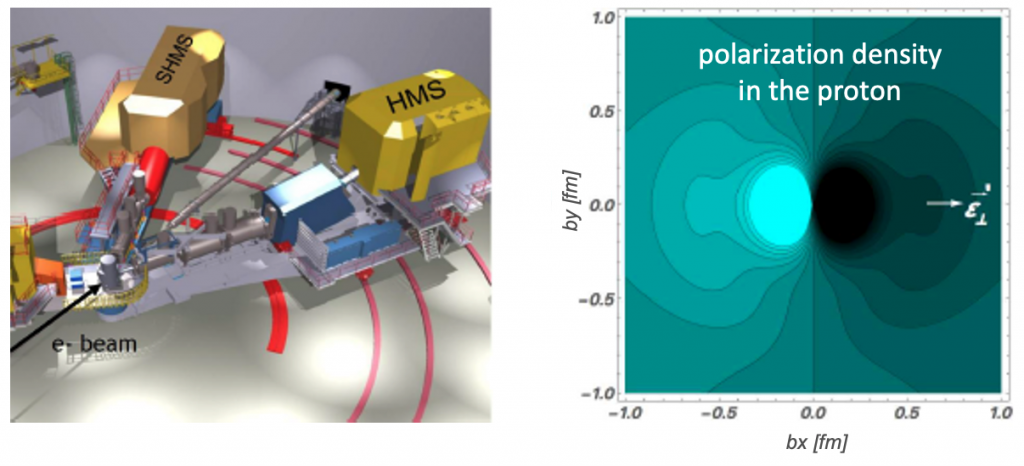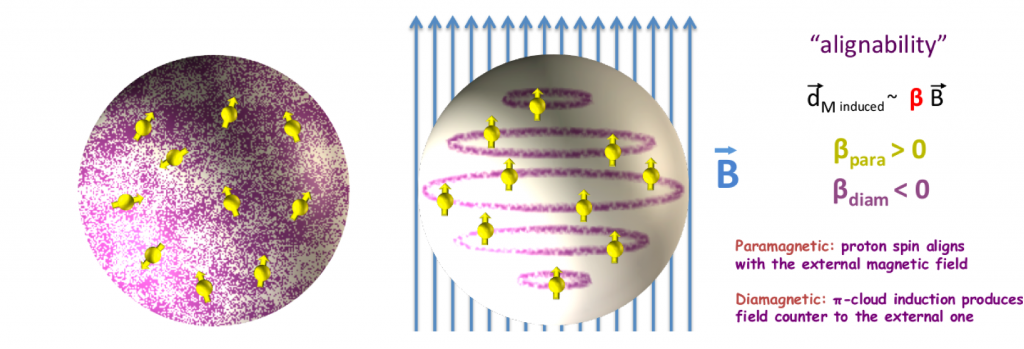The polarizabilities of a composite object are fundamental characteristics of the system, just as its mass or shape. Among all the known properties of the nucleon, polarizabilities have the unique status of characterizing the nucleon dynamical response to an external electromagnetic (EM) field, describing
how easy the charge and magnetization distributions inside the nucleon are distorted by the EM field. Our group is leading an experimental effort that will offer the highest precision measurement of the electric and the magnetic generalized polarizabilities (GPs) of the proton, addressing a number of open questions in regard to the proton’s response to an EM field.

Figure: The experimental setup at Jefferson Lab. 4 GeV electrons scatter on a liquid hydrogen target. A real photon is produced in the reaction and provides the EM perturbation to the proton so that the polarizabilities can be measured.
Previous measurements have shown an unpredictable behavior of the proton’s electric GP that the theory cannot explain. Our group is leading an experiment at Jefferson Lab that will study in depth this critical property of the proton. Prof. Sparveris is the spokesperson of the VCS experiment that will offer the most precise measurements of the electric GP so that the underlying nucleon dynamics responsible for this effect can be understood. The experiment will also measure with high precision the magnetic GP of the proton. This will in-turn will shed light into the interplay of paramagnetism and diamagnetism in the nucleon. A recent review on the topic at Prog. Part. Nucl. Phys. can be found here.

Figure: The electric polarizability characterizes the “deformability” of the proton’s charge distribution under the influence of en external electric field.

Figure: The magnetic polarizability characterizes the “deformability” of the proton’s magnetization distribution under the influence of en external magnetic field.